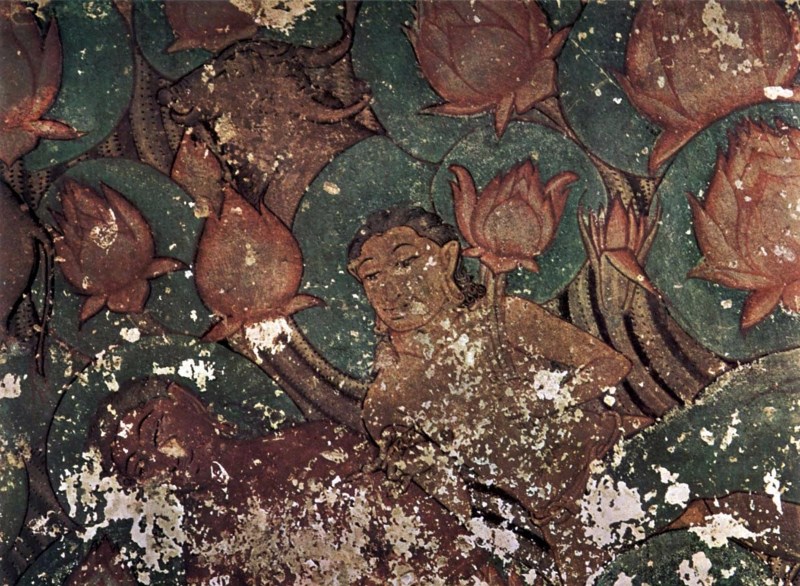Archaeologists working on the Indonesian Island of Sulawesi, located on the east of Borneo, have discovered this painting, in a cave called Leang Bulu’Sipong, which depicts human-like figures using spears and ropes to hunt a wild boar, and is considered as the oldest religious painting as well as the first ever painting in the world. The painting is estimated to be about 44,000 years old and portrays hunters who appear to be Therianthropes or humans with animal characteristics i.e. tails and snouts.
The painting’s panel is five metres wide and appears to be depicting a wide range of hunters encountering their prey—a kind of bull referred to as an anoa along with wild boars, which vaguely represents a communal hunt where animals are tricked into leaving their place of hiding and directed towards their hunters who excitedly await them.
However, various questions have been raised by other researchers who seriously doubt whether the panel portrays a single story, and rather claim that it is a combination of successive stories painted over a prolonged duration.
Adam Brumm, an archaeologist at Australia’s Griffith University has claimed that Therianthropes occur in the folklore or narrative fiction of nearly every modern society and they are believed to be gods, spirits or ancestral beings in many religions across the world.
Until now, the oldest piece of art was considered to be a 40,000 year-old ivory figure that was discovered in a cave in Germany that represented a human body with a feline head, however, this religious painting has surpassed its record.
But are we sure that it is actually 44,000 years old? Well, apparently the crew of archaeologists conducted a thorough analysis of the calcite that had deposited on the painting. Radioactive Uranium inside the calcite gradually decays to form thorium so they measured the levels of different isotopes of these elements. And they made the astounding discovery that the calcite initiated its formation on the painting approximately 43,850 years ago.
Other than this phenomenal cave and painting, there are over two hundred other caves and shelters depicting primordial art in Sulawesi alone, with the uncovering of many more new sites every year!
Comparison with other primeval art
A few counter-claims from scientists suggest that it may not be the ‘oldest’ art to be ever found but research teams inform us that it most likely is the oldest story ever known to mankind. The Sulawesi art might also be the oldest form of animal drawings ever seen.
European art history challenged by this discovery
Since mid-1960s numerous sites presenting cave paintings have surfaced in Sulawesi and Borneo, which tremendously challenged the stereotypical idea that paintings originated in Europe. When compared with the cave paintings found in Lascaux, France, which are only 17, 000 years old.
Despite the paintings in Sulawesi being in horrible condition, they exposed an art culture that was a hundred times more advanced than today’s mediocre art. That art possessed its own spiritual beliefs and a mind-boggling folklore.
One of the researchers has informed that the stupendous painting can be considered as one of the earliest form of figurative art along with being the oldest evidence of a narrative art piece from the Palaeolithic era.
He also expressed the spell-binding fact that the ability to cook up fictional stories could have most likely been the ultimately crucial point in the evolution of human language and the development of modern-day cognitive behaviour
Nevertheless, this Sulawesi drawing isn’t really the oldest one ever discovered. But a few years prior to this discovery, scientists had eventually stumbled upon the ‘oldest piece of drawing’ known to mankind, sculpted upon a fragment of rock in South Africa which was estimated to be at least 70,000 years old.

[Image Source: https://media.npr.org/assets/img/2019/12/10/hunting-close-up-d89cac5ff429466ac5311f761a40e895dd567f17.jpg]
